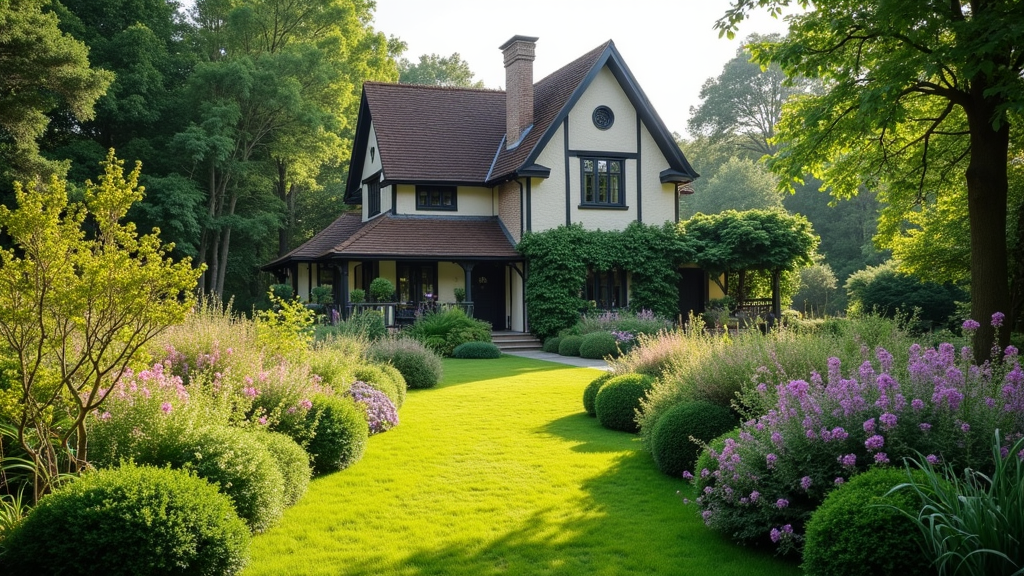Introduction: The Green Heart of Community
Have you ever strolled through a community garden and felt an overwhelming sense of togetherness? There’s something magical about shared gardening spaces that can transform neighborhoods, foster relationships, and create a sense of belonging. In today's fast-paced world, it’s easy to forget the importance of our roots—both literally and figuratively. This article delves deep into the essence of community gardening, exploring how these green sanctuaries serve as beacons of collaboration, sustainability, and friendship.
Fostering Community Through Shared Gardening Spaces
Community gardens are more than just patches of land filled with vegetables; they represent a philosophy of cooperation and shared responsibility. When we think about landscape design in North Carolina, we often imagine sprawling fields or manicured lawns. However, shared gardening spaces offer an alternative vision—one where communities come together to cultivate not only plants but also relationships.
The Benefits of Shared Gardening Spaces
1. Promoting Social Interaction and Bonds
Shared gardening spaces naturally bring people together. Imagine a group of neighbors exchanging gardening tips while tending to their plots. These interactions often lead to friendships that extend beyond the garden gate. It’s a place where laughter is shared alongside crops.
2. Encouraging Healthy Eating Habits
One cannot underestimate the value of fresh produce! By growing their own fruits and vegetables, community members are more likely to incorporate healthy eating habits into their daily lives. Did you know that kids who participate in gardening programs are more inclined to try new foods?
3. Enhancing Mental Well-being
Gardening is known to be therapeutic. The act of planting seeds, nurturing them, and watching them grow can provide a profound sense of accomplishment and peace. Many studies suggest that spending time in nature reduces stress and anxiety levels significantly.


4. Fostering Environmental Awareness
When people engage with the land, they become more aware of environmental issues like climate change and biodiversity loss. Community gardens often incorporate sustainable practices such as composting and rainwater harvesting, teaching participants invaluable lessons about ecology.
Designing Effective Shared Gardening Spaces
1. Understanding Landscape Design Principles
Effective landscape design is crucial for creating functional communal gardens that appeal to diverse groups. How do you ensure everyone feels included? From raised beds for accessibility to designated children's areas for education—thoughtful design can make all the difference.
2. Selecting the Right Location
Location is key! A successful community garden should be easily accessible for all members but also strategically placed to receive ample sunlight throughout the day.
3. Soil Quality: The Foundation of Success
Good soil makes for good crops! Testing soil quality before planting ensures that it has the right nutrients for growing healthy plants.
4. Choosing Appropriate Plants for Your Region
Understanding which plants thrive in your region is essential for success in communal gardens. For instance, those living in North Carolina may focus on native species that flourish in local conditions while also being mindful about promoting biodiversity.
Establishing Community Gardening Initiatives
1. Getting Started: Forming a Committee
Want to kickstart your own community garden? Begin by forming a committee composed of interested neighbors who share http://johnnylimh501.theburnward.com/landscaping-with-children-in-mind-safe-and-fun-designs your passion for gardening!
2. Securing Land: Permissions and Regulations
Before you plant anything, check local zoning laws or regulations regarding communal gardens in your area. Acquiring permissions can sometimes be tricky but it's necessary!
3. Fundraising Ideas for Initial Setup
Most community projects require some funding! Consider hosting bake sales or car washes to raise money for tools, seeds, and soil.
4. Engaging Local Businesses
Local businesses may be willing to sponsor your gardening project by donating supplies or offering financial support in exchange for advertising opportunities.
Community Engagement Strategies
1. Organizing Workshops & Events
Hosting workshops on topics such as composting techniques or pest management not only educates participants but strengthens community bonds too!
2. Creating a Calendar of Activities
A shared calendar helps keep everyone informed about upcoming events including planting days or harvest festivals.
3. Implementing Volunteer Days
Regular volunteer days allow everyone from seasoned gardeners to novices to contribute equally towards maintaining the space.
Challenges Faced by Shared Gardening Spaces
Even with all these benefits, shared gardening spaces face hurdles along their journey:
1. Conflict Management Among Members
Conflicts may arise over plot divisions or differing opinions on maintenance practices; having clear communication channels can mitigate these issues effectively.
2. Seasonal Variations in Participation
Participation tends to fluctuate with seasons—some contributors might disappear during winter while others could emerge during spring planting season!
Sustainability Practices in Shared Gardens
Integrating eco-friendly practices into community gardens enhances their positive impact on both participants’ lives and larger environmental issues:
1. Water Conservation Techniques
Utilizing drip irrigation systems or rain barrels can significantly reduce water waste within communal gardens.
2. Composting Organic Waste
Composting not only diverts organic waste from landfills but also enriches soil health—two birds with one stone!
Community Impact Beyond the Garden Gates
Shared gardening spaces have profound effects beyond their physical boundaries:
1. Strengthening Neighborhood Ties
As residents work side-by-side tending crops together they develop relationships built on trust—a cornerstone for any thriving neighborhood!
2: Inspiring Local Initiatives
Communal efforts inspire other neighborhood initiatives like clean-up drives or food drives further solidifying collaboration among residents!
FAQs
Q1: What is a community garden?
A community garden is a piece of land collectively managed by a group where individuals grow fruits, vegetables, flowers or herbs collaboratively while building social relationships within their community.
Q2: How do I start my own community garden?
To start one yourself: gather interested neighbors; secure land permissions; plan out design elements based on landscape design principles; procure necessary funds; engage local participants through events/workshops!
Q3: What types of plants are suitable for North Carolina's climate?
In North Carolina’s climate consider growing peppers tomatoes cucumbers squash etc., focusing primarily on native species as they thrive better under local conditions while promoting biodiversity.
Q4: How can I fund my community garden project?
Funding could come through various avenues like local business sponsorships bake sales crowdfunding platforms grants etc., ensuring adequate resources are available from inception till harvest time!
Q5: Are there any challenges faced by community gardeners?
Yes! Common challenges include conflict resolution among members seasonal variations affecting participation lack awareness around sustainable practices - all manageable with effective communication strategies!
Q6: What role does landscape design play in community gardens?
Landscape design fundamentally shapes how well individuals interact with each other within the space encouraging inclusivity accessibility beauty attracting diverse groups while maximizing productivity through thoughtful layout choices made beforehand ensuring long-term success overall!
Conclusion
In conclusion, fostering communities through shared gardening spaces serves as an invaluable method for bringing people from different backgrounds together—all united under one simple goal: nurturing life! By understanding landscape design principles tailored specifically toward creating engaging environments conducive towards cooperation learning sustainability—we pave pathways leading back toward stronger neighborhoods cultivated through friendship camaraderie—and yes—the sheer joy found when digging our hands deep into rich earth planting seeds that will one day bloom beautifully before our very eyes! So why wait? Get involved today; dig into this rewarding journey where growth happens both above ground…and below!